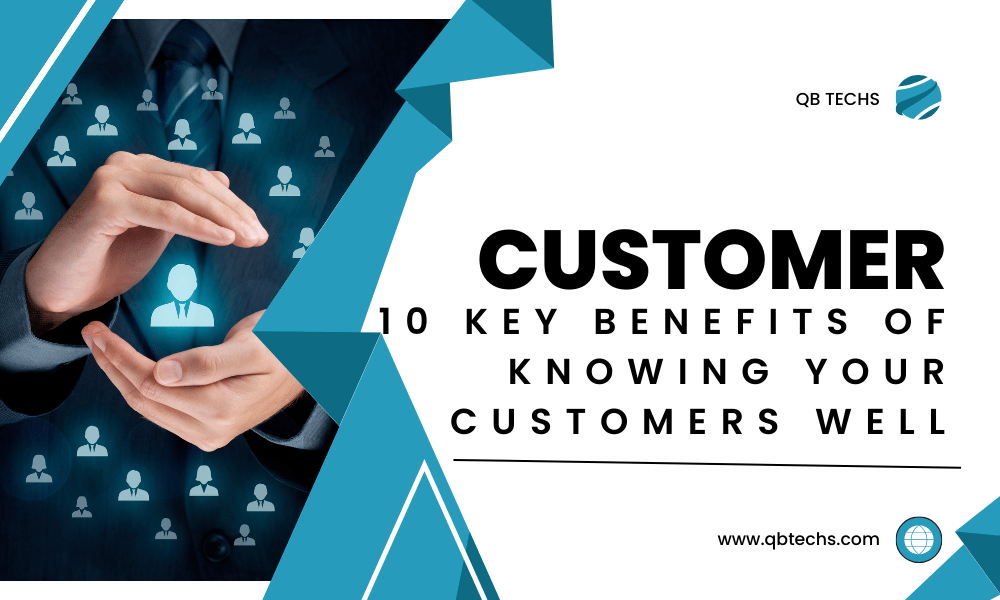“To understand the customer, walk a day in their shoes.” ~ Japanese Proverb
What’s your dream as an entrepreneur? Scale up quickly and sizably, right? After all, you are in a fast-paced and highly competitive industry where the sharks are constantly out to devour your market share, which calls for you to knuckle down and work harder to expand your reach. This, of course, entails growing your customer base.
However, in a bid to build those numbers, it’s easy to lose sight of what truly matters: understanding the people behind the purchases—who they are and what motivates them to do business with you. Getting to know your customers well isn’t just a “nice to have”; it’s critical to your business’s survival and makes up the core of customer service, which the vast majority of customers, according to surveys, consider a key factor in their loyalty to a brand.
What Does It Mean to Know Your Customers (KYC)?
It’s simply more than just ticking off their demographics or purchasing patterns—the basic stuff. It’s about knowing the why behind their behaviors, preferences, and needs, which requires digging deep into what steers their decisions, pain points, lifestyle habits, and loyalty. To what end? Businesses need such insights to tailor their products, services, and communications so they can resonate on a personal level and create meaningful relationships instead of one-off transactions.
For example, discovering a 35-year-old woman wants to buy running shoes from you is quite helpful. But what for? Maybe she’s training for her first marathon or getting back into fitness after having kids. Knowing which it is transitions your approach from solely selling the product and smiling to the bank to offering relevant solutions, like targeted workout tips, personalized emails with marathon preparation advice, or loyalty perks aligned with fitness milestones.
Why does Netflix retain a significant portion of its user base (277.65 million paid subscribers worldwide as of Q2 2024), even with increased competition from other streaming platforms? Right off the bat, it utilizes data analytics to learn viewer habits and preferences to suggest personalized recommendations, keep users engaged, and develop original content for specific audience segments, rather than focus only on gaining subscribers.
Why Is KYC Important for Your Business?
Staying ahead of the competition as a business owner demands seeing what others don’t see in your customers. As the Japanese proverb rightly states, you need to put yourself in their shoes—imagine them to be your spouse, friend, parent, sibling, or neighbor, all of whom you’d treat not as another number in your supply line but as someone you know and care about.
This sentiment is precisely what makes customer-centric companies 60% more profitable than their counterparts. But it isn’t just about the greenback, knowing your customer provides:
Improved Customer Satisfaction
When you understand customer behavior, preferences, and problems, it becomes easy to tailor your offerings to meet customers’ specific needs, making them feel heard and more confident about their purchasing decisions. One sure way to improve customer satisfaction is to engage in feedback loops to modify your products and services based on direct input from willing customers.
Increased Loyalty
A strong business-client bond promotes long-term success. But for this to happen, you need to make your customers feel recognized and appreciated, and be consistent. This way, they will more likely stay loyal to your brand, leading to repeat purchases and word-of-mouth referrals—two essential factors you need to sustain revenue. Remember, it’s all about delivering positive experiences to foster emotional connections.
Better Targeting
Effective “KYC” lets you segment your customers based on key parameters you can then use to create targeted marketing campaigns that speak directly to the interests and needs of each group. So, if you know a percentage of your audience values eco-friendly products, you can concentrate your marketing efforts and messaging on sustainability to get better engagement and higher conversion rates.
Enhanced Product Development
Customer insights (feedback and trends) are significant in the innovation process. For one, they help you identify gaps in the market and areas for improvement, which contributes toward developing new products that meet consumer demands and refining existing offerings.
Optimized Conversion Rates
You can craft deeply resonating campaigns that inspire your audience to take action, including making a purchase, joining your newsletter, or following your brand on social media. As engagement grows, your sales funnel naturally becomes sharper and more efficient.
Top-Notch Customer Support
No one assists customers better than a team of experienced representatives who are familiar with common issues, preferences, and past interactions. Such well-trained agents provide quicker and more personalized solutions, which reduce frustration, improve the overall buying experience, and build retention. What’s more, their proactive outreach based on customer behavior helps prevent issues before they arise.
Stronger Brand Advocacy
Happy customers are your strongest advocates, considering they are naturally inclined to share their positive experiences both online and offline for free. This word-of-mouth marketing packs a punch since it drives new customer acquisition at a fraction of the cost of traditional ads. And when you create a sense of community around your brand—where these consumers feel a genuine connection—it takes that advocacy to the next level.
Informed Business Decisions
Data derived from analyzing trends, preferences, and behaviors can intelligently inform various aspects of your business strategy, from marketing and sales to product development and customer service. This approach reduces the risks associated with business decisions since you deal with facts, not assumptions.
Competitive Advantage
The modern industry is oversaturated—meaning it takes more than selling to stand out from the competition. You’d need to establish a unique position in the market your competitors can’t easily replicate, an edge that comes by investing in customer research to anticipate significant shifts and adapt their strategies accordingly.
Adaptability to Market Trends
Customer preferences shift quickly due to cultural, economic, or technological changes, and only businesses with a strong grasp of their client base can adapt more swiftly to these trends to stay relevant. So, it’s within your purview to continuously engage with customers and monitor their evolving needs to pivot your strategies, update your offerings, and seize new opportunities.
How to Understand Your Customers Better
These seven strategies can help you establish a good rapport with your customers:
- Gather Feedback: Use surveys, reviews, and direct conversations to learn what customers think about your products and services.
- Analyze Purchase History: Track patterns in previous transactions to identify preferences, buying habits, and trends.
- Monitor Online Behavior: Implement tools like Google Analytics to observe how customers interact with your website or social media platforms.
- Create Customer Personas: Develop profiles that represent your ideal customers, based on demographic and behavioral data.
- Use External Data Sources for Demographic Insights: Gain additional insights from services that offer public records information to better understand key customer demographics or validate leads.
- Engage on Social Media: Respond to comments, questions, and messages. This is a cheat sheet for understanding where your audience lies, what they are interested in, and how they perceive your brand.
- Leverage CRM Tool: CRM software programs like Zoho and Salesforce are quite handy in organizing and analyzing customer data accurately to help you create more personalized outreach.
Conclusion
Knowing your customers is, without doubt, critical to business growth, especially in today’s data-driven world, where competitors are just as eager to capture the same audience. The insights you gather in your quest offer a 360-degree view of who they are, what they need, and how they shop, which you can leverage to deliver better experiences. It’s not always a one-size-fits-all deal, so consider combining the strategies discussed above and tweaking them where needed, for a more tailored approach.




Leave A Comment
You must be logged in to post a comment.